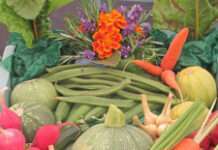K-State veterinarians caution that most injuries happen in the first three weeks
MANHATTAN, Kan. — At any sporting event, it is easy to spot the trainers and medical personnel hovering on the side watching for a potential athletic injury. In much the same way Kansas State University Beef Cattle Institute veterinarians Bob Larson and Brad White advise that producers need to closely monitor their bulls at the beginning of breeding season.
“Just like an athlete at the start of their sports season, game time is now for bulls turned out in breeding pastures,” said White on a recent Cattle Chat podcast.
Larson agreed with that analogy and said that the first three to four weeks of the breeding season are critical for a successful breed-up and the bulls should be monitored particularly closely during this time.
“At the start of the breeding season, none of the cows are pregnant therefore, bulls will be the most active when there are the most open cows to breed,” Larson said.
“The first few weeks of the season are the most important time of the year regarding the success of the breeding program because the age of the calves at weaning directly relates to the income for the operation.”
The two most common bull injuries that result are lameness and damage to the penis, Larson said.
“It is important to evaluate his movement on his feet and legs, and if you see him limping, you will want to check him out more closely,” Larson said. The temporary lameness can be from a injuries from fighting other bulls, a misstep when mounting cows, or even stepping in a hole in the pasture.
Larson and White caution producers not to just drive by the pasture, observe the bull lying down and assume he is okay.
“You’ve got to get out of the truck and check to make sure the bulls are moving well,” White said.
Along with movement, Larson said observers need to carefully look at the bull’s underline. Swelling between the sheath and scrotum could indicate an injury to his penis.
“Take the time to look at his feet and legs and his underline as well as observing his behavior to confirm he is in good overall health,” Larson said.
He added: “The month of breeding turnout is really important; give it the attention it deserves.”
To hear the full discussion, listen in to the Cattle Chat podcast online.
FOR PRINT PUBLICATIONS: Links used in this story
BCI Cattle Chat podcast, https://ksubci.org/2021/05/14/bottle-calves-bringing-in-orphans-in-season-breeding-soundness-exam-grass-feeding/
K State Research and Extension is a short name for the Kansas State University Agricultural Experiment Station and Cooperative Extension Service, a program designed to generate and distribute useful knowledge for the well being of Kansans. Supported by county, state, federal and private funds, the program has county extension offices, experiment fields, area extension offices and regional research centers statewide. Its headquarters is on the K State campus in Manhattan. For more information, visit www.ksre.ksu.edu. K-State Research and Extension is an equal opportunity provider and employer.
Story by:
Lisa Moser
785-532-2010
[email protected]
More information:
Bob Larson
785-532-4257
[email protected]
Brad White
785-532-4243
[email protected]





